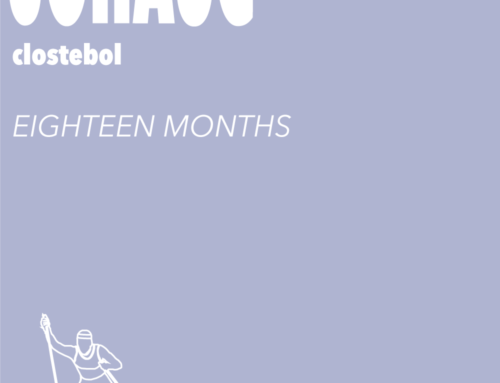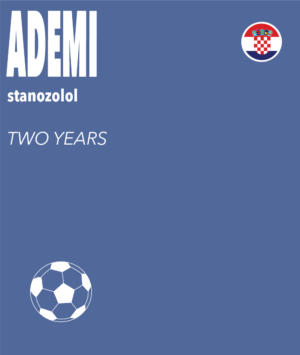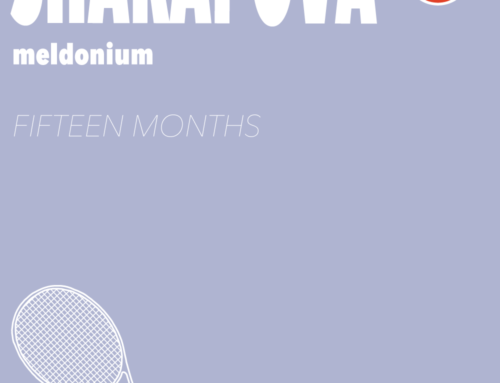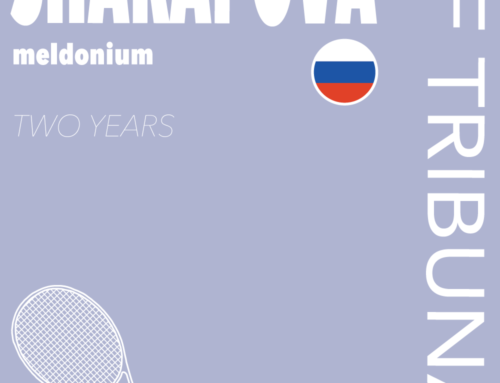CAS Award: CAS 2014/A/3876, Stewart v. FIM, April 27, 2015.
FACTS
James Stewart, a professional motocross and supercross rider, had been regularly taking the medication “Adderall” since 2012,[1] when he underwent an In-Competition Doping Control test on 12 April at the 2014 AMA Supercross FIM World Championship.[2] In May 2014, an analysis of the rider’s Sample taken revealed the presence of Amphetamine,[3] which is a substance found in Adderall and prohibited In-Competition only, as a stimulant under category S6 of the FIM Anti-Doping Code.[4]
The medication was prescribed to the rider for therapeutic purposes, specifically to treat his diagnosed Attention Deficit Hyperactivity Disorder (“ADHD”). At the time of the test, Mr. Stewart did not have a Therapeutic Use Exemption (“TUE”), despite the fact that he had signed an “Acknowledgement and Agreement” to FIM’s anti-doping policy in January 2014.[5] He also had failed to disclose his regular use of this drug in a Medical History Form that he signed in January 2014, in accordance with FIM’s Anti-Doping Code, replying “No” “to the question ‘Do you take any medicine or drugs regularly’”.[6] However, the day after the test, Mr. Toribio, James Stewart’s trainer, called the American Motorcyclist Association (“AMA”), the United States affiliate to the Fédération Internationale de Motocyclisme (“FIM”),[7] to alert it that the rider was currently taking Adderall. During an email exchange following this phone call, Mr. Toribio was informed both that Adderall contained a Prohibited Substance and that James Stewart was in need of a TUE.[8] During the email exchanges that followed, even though Mr. Toribio believed he had submitted the information necessary to receive a TUE on James Stewart’s behalf,[9] the TUE itself was not actually granted to the rider at this point. In the meantime, James Stewart underwent another In-Competition Doping Control test on 2 June 2014. This time he was forthcoming about his use of Adderall, but claimed incorrectly that he held a TUE.[10] Following another failed attempt by his counsel to receive a TUE in June, James Stewart successfully received a TUE for prospective use of Adderall on 15 October 2014.
FIM DISCIPLINARY PROCEEDINGS
Meanwhile, the disciplinary proceedings with respect to the presence of Amphetamines in his Sample taken on April 12 progressed. He received a Provisional Suspension on 17 June, which he promptly opposed on the basis that his Use of Adderall could be justified by a TUE. On 26 June, FIM’s International Disciplinary Court (“CDI”) denied James Stewart’s request to lift the Provisional Suspension.[11] During his Provisional Suspension, the rider participated in a number of Competitions held by MX Sports Pro Racing (“MX Sports”), that were not under the purview of the FIM or AMA.[12] In contrast to the World Anti-Doping Code (“WADC”), MX Sport’s Substance Abuse Policy “does not provide for TUEs but, in effect, authorises the use of substances which would otherwise be banned so long as they have been used under prescription”.[13]
Following a hearing on 23 October 2014, the CDI confirmed that James Stewart committed an anti-doping rule violation for the presence of Amphetamine in his Sample taken on April 12. Consequently, the CDI sanctioned James Stewart with a sixteen-month period of Ineligibility, starting from the date of his Sample collection and disqualified his results both from the AMA Supercross FIM World Championship (during which James Stewart’s Sample was taken) and the multiple Competitions he took part in during his Provisional Suspension that were not under the purview of the FIM/AMA.[14]
CAS PROCEEDINGS
James Stewart appealed the decision of the FIM to the CAS requesting an annulment of the CDI decision, or alternatively, a reduction in the length of the period of Ineligibility and a reinstatement of his results. James Stewart’s main argument was that his violation was in effect a “paperwork violation” on the basis that he could have received a TUE for Adderall, but due to confusion surrounding his lack of anti-doping education and different rules applying to different Competitions in which he participated, he failed to do so. Accordingly, the sanction he received (a sixteen-month period of Ineligibility and the Disqualification of pertinent results) was disproportionate and should be either reduced or eliminated. He also argued that the 2015 TUE rules that had since come into effect would have allowed James Stewart to receive a retroactive TUE, thus eliminating the violation altogether.[15]
The FIM rejected the notion that James Stewart had simply committed a paperwork violation, emphasizing his repeated commitments made to follow the FIM’s Anti-Doping Code. It also found that James Stewart should have known that his Provisional Suspension would apply to the competitions promoted by MX Sports.
The Stewart CAS Panel made observations surrounding Mr. Stewart’s ingestion of Adderall (i) and then proceeded to discuss James Stewart’s level of Fault in committing an anti-doping rule violation (ii); and the Disqualification of results from the non-FIM/AMA sponsored competitions (iii)
(i) The Ingestion of Adderall
The Panel briefly described James Stewart’s medical history concerning his ingestion of Adderall. In particular, it noted that the Adderall was prescribed following an injury that James Stewart received when he lost concentration while riding.[16] This event, and his “high level of disorganization, mood swings, impulsivity and a significant inability to complete or even initiate a task or rehabilitation programme”[17] eventually led to a diagnosis of ADHD and a prescription of Adderall. The Panel also noted that a person with ADHD has an “enhanced risk of motor vehicle accidents” and that “[t]he effect of Adderall is to bring Mr Stewart back ‘to the baseline’ and into the normal range”.[18]
(ii) James Stewart’s Level of Fault in Committing an Anti-Doping Rule Violation
The CAS Panel then turned to the question of whether there was a basis for its reduction below the sixteen months assigned by FIM’s CDI, under the applicable No Significant Fault or Negligence provision (Art. 10.5.2 of the 2009 WADC), which, if applicable, allows for a reduction down to a one-year period of Ineligibility. The Stewart CAS Panel approached this task by weighing the factors in James Stewart’s favor against his “personal duty to ensure that no Prohibited Substance entered his body”.[19] In his favor, the Panel noted the following factors:
(a) The substance was prescribed for him by a number of different doctors (although none were sports specialists).
(b) None of those doctors alerted him to the possibility of anti-doping problems as a result of taking the substance.
(c) He had been granted a specific medical authorisation by a Dr Cocores (one of the doctors he consulted) for driving purposes.
(d) He obtained a TUE after the event which showed that he had a valid therapeutic reason for use of the substance and was not (and did not try to) gain an unfair competitive advantage from use of the substance.
(e) He took the substance for a legitimate safety reason, namely to reduce the likelihood of accidents which could have imperilled not only him but also others.
(f) He had been taking the substance over a lengthy period.
(g) There was limited education provided by AMA in particular in relation to the TUE procedure, though it should be noted that in addition to Dr McManus’s 2012 briefing he had visited all the major factory teams (including Toyota) afterwards to answer questions.
The Panel, however, found that the rider’s failed “duty to be aware of the fact that the medication which he was taking contained a prohibited substance”[20] could be “not unfairly described as […] one of reckless disregard”.[21] It relied primarily on the fact that “[h]e took no precautions to discover the contents of what he was taking”, even though he “was at least aware of the possibility of the substance being problematic”.[22] It also pointed to the numerous times that James Stewart had signed forms declaring that he was not on any medication or drugs. On this basis, the Panel rejected James Stewart’s classification of his offense as a “mere ‘paper violation’”[23] It also declined to be bound by the length of the periods of Ineligibilities imposed in other TUE cases. It asserted that while they could be useful for “giving a ‘feel’ for the appropriate levels of penalty”, it affirmed that “each case has to be determined on its own particular merit”.[24]
The Panel also categorically rejected the notion that the new 2015 WADC would have permitted James Stewart to receive a retroactive TUE for Adderall. In doing so, it recalled the relevant portion of Art. 4.3 of the 2015 WADC as follows:
An Athlete may only be granted retroactive approval for his/her Therapeutic use of a prohibited substance or prohibited Method (ie a retroactive TUE) if: …d. it is agreed by WADA and the Anti-Doping organization to whom the application for a retroactive TUE is or would be made, that fairness requires the grant of a retroactive TUE.
It justified this position by stating only that “[t]here would have been no requirement of fairness that required Mr Stewart to be granted a retrospective TUE simply because he had failed to carry out his obligations and so through ignorance to apply timeously for a TUE”.[25]
Turning to the question of the length of the period of Ineligibility, the Panel started its analysis by breaking the available sanction range (a 12 to 24 month period of Ineligibility) into two sub-ranges, based on degree of fault. The lower half of this range (12 to 18 months) was considered to correspond to violations committed with “light fault”, and the upper half to violations committed with “normal fault”.[26] The CAS Panel held that James Stewart’s violation was appropriately classified as committed with “light fault”. In doing so, the Panel created a general rule for cases such as James Stewart’s, stating that an Athlete who “got a prescription from a doctor for a medication and later on actually obtained a TUE from the competent sports organisation to use the medication, only ‘light fault’ can be attributed to the athlete in case he tests positive before actually obtaining the TUE”.[27] The CAS Panel then turned to the specific circumstances of the case, to determine where within this range James Stewart’s fault should fall. Noting that the rider “had anti-doping information available to him and that – in essence – he did not take any precautions whatsoever to avoid the adverse analytical finding”, the CAS Panel confirmed that his sanction appropriately fell at the high end of the “light fault” range, thus the sixteen month period of Ineligibility was indeed correctly assigned.
The CAS Panel found that it was not necessary to address the issue raised regarding the proportionality of the sanction. James Stewart argued that “even if the period of ineligibility were reduced” to the minimum available under the applicable rules, it would still be disproportionate considering the circumstances of the case. Rejecting the rider’s proportionality argument, the Panel held that since the sanction actually imposed upon the rider was “proper” and was greater than the minimum available according to the applicable rules, the proportionality of the sanction did not come into issue.
(iii) Disqualification of Results from the non-FIM/AMA Sponsored Competitions
The final major issue that the CAS Panel considered in the Stewart award was whether the results James Stewart obtained in competitions that were not sanctioned by neither FIM nor AMA while serving his Provisional Suspension were properly disqualified.
The Stewart CAS Panel explored the relationship between AMA/FIM (both Signatories of the WADC) and MX Sports (not a Signatory of the WADC), in the context of whether Mr. Stewart violated his Provisional Suspension by competing in events promoted by MX Sports. The FIM’s position was that it had authority to disqualify his results obtained in these competitions due to a “clear contractual link” between FIM and (via AMA) MX Sports.[28] James Stewart disagreed, arguing instead that the “suspension did not and could not apply to the [events promoted by MX Sports] and consequently FIM had no jurisdiction over the results achieved by Mr Stewart in those events”.[29] The Panel found that MX Sports, and the other relevant organizations, could neither be considered as members or affiliates of AMA or FIM, “nor did they operate under the umbrella of any international federation”.[30] Rather, riders who participate in these events must obtain an “AMA Pro Racing License”, and are subject to an entirely different substance abuse policy that does not provide for Provisional Suspensions, nor does it contain comparable penalties for substance violations.[31]
The CAS panel ultimately found that the question of whether FIM had a “sufficient contractual nexus” to disqualify these results was not material. Instead, the CAS Panel held that FIM “has the authority and power to say that inasmuch as its competition schedule is concerned, it will disqualify the results,”[32] while acknowledging that the event organizer might be perfectly justified in not disqualifying the results, due to its independence from FIM. The Panel also noted that while his participation in other events during his Provisional Suspension was in violation of FIM’s Anti-Doping Code, this was not of consequence to the present case, as James Stewart was not charged with violating this particular rule.
COMMENTS
In the Stewart case, an Athlete received a sixteen-month period of Ineligibility for a violation arising from a medication that was prescribed by a doctor. Moreover, the Panel fully accepted that the substance had been taken for therapeutic, non-sport-performance-enhancing purposes and was even essential to his own safety, as well as that of other riders. Had James Stewart received his TUE before, instead of after testing positive for a Prohibited Substance, his ingestion of Adderall would not have led to a violation at all. Thus, it was completely accepted that he was not a “real cheat”. However, despite the arguably “technical” nature of the violation, the Stewart Panel was clear in its position that this case represented more than a mere “paperwork” violation in light of the rider’s manifest failure in his duties to avoid ingesting a Prohibited Substance under the relevant anti-doping rules, or to take the necessary steps to do so according to the procedures offered by the anti-doping rules. Given the considerable impact of the Panel’s reasoning on the career of an Athlete, it is worth looking closer at this reasoning to better understand the CAS Panel’s stance, and the flexibility of the regime itself to synthesize what lessons can be drawn from this case, especially by Athletes wishing to avoid a similar result.
While the CAS Panel’s approach to sanctioning James Stewart’s violation seems well-aligned with the provisions of the 2009 Code, it does highlight some areas of inflexibility in the sanctioning regime itself. In James Stewart’s case, under Article 10.5.2 the lowest sanction that was available to him was a one-year period of Ineligibility, due to the fact that the Panel found that his violation entrained No Significant Fault or Negligence and did not involve a Specified Substance. If it had involved a Specified Substance, he would have had available a range between a zero and a two-year period of Ineligibility. The revision of the 2015 Code took some steps to remedy the different treatment of Specified and non-Specified Substance when the circumstances of the case call into question the underlying justifications for the different treatment (i.e. that “the Code sanctions should be more flexible where the Athlete or other Person can clearly demonstrate that he or she did not intend to enhance sport performance”[33]). For instance, under the 2009 Code, if an Athlete was unlucky enough to ingest a product that was contaminated with a non-Specified Substance, rather than a Specified Substance, the lowest period of Ineligibility he or she could receive was one year. The 2015 Code now allows for any violation involving a Contaminated Product to be subject to a zero-to-two year period of Ineligibility, thus treating these types of violations involving Specified and non-Specified in the same manner.
As illustrated by the Stewart case, there are other types of violations that could arguably be subject to the same logic that led to the addition of the Contaminated Products provision. Particularly, once it is accepted that an Athlete was not aware that the medication (or other product) he or she ingested contained a Prohibited Substance and the ingestion of the substance was in a context unrelated to sport performance, it is harder to justify sanctioning violations involving Specified Substances and non-Specified Substances differently. As an illustration, it is worth comparing the treatment of the Athletes in the Cilic and Stewart cases.[34] In both of these cases, it was accepted that the Athlete involved had no intention to increase his performance and, most relevantly, was not aware that the ingested product contained a Prohibited Substance. In the Cilic case, the Athlete’s ignorance was due to a mistake in reading the label; in the Stewart case, it was due to taking a prescribed medication without performing any due diligence to avoid ingesting a Prohibited Substance. The Panel applied the same methodology in determining the appropriate sanction based on the Athlete’s degree of fault. It sub-divided the available range of sanctions based on “bands” of fault, and then assigned the Athlete a period of Ineligibility, based on the Athlete’s degree of fault. Considering the circumstances of the case, and despite the differences in the reason for not knowing the products contained a Prohibited Substance, both Athletes were considered to have committed a violation with a “light” degree of fault, with Cilic falling somewhere near the middle of the “light” range, and Stewart falling more towards the “high” end of the “light” range. However, the Cilic case involved a Specified Substance, so the Athlete received a four month period of Ineligibility. Since the Stewart case did not, the Athlete received a sixteen month period of Ineligibility. In other words, despite the fact that James Stewart’s degree of fault was considered to be relatively similar to that of Marin Cilic, his sanction was four times as long, which raises questions of fairness in the regime itself. The difference in the end result is due to the fact that the substance unknowingly ingested by Marin Cilic happened to be a Specified Substance and the substance ingested by James Stewart happened to be a non-Specified Substance. But both athletes were unaware that they ingested the substance, which means that their level of “guilt” was in no way influenced by the type of substance ingested.
One can thus legitimately question why Marin Cilic’s sanction can be fixed in a range reaching from a zero- to two-year period of Ineligibility, while James Stewart’s had to be fixed in a dramatically more unfavorable range reaching from a one year minimum sanction up to two years. Instead of challenging the rationale of available sanctioning ranges, James Stewart raised the argument that a proportionate sanction would command going below the minimum admissible under the WADC.[35] The Stewart Panel rejected the rider’s argument. The Panel held that since the period of Ineligibility was appropriately determined and since it did not fall at the lowest end of the available range of sanctions, there was no need to assess this issue of proportionality. By doing so, the Panel implicitly assumes that the sanction appropriately determined within the available range is also proportionate. However, it does not address the issue of whether the approach of determining a sanction within two different ranges, based on the type of substance involved, can consistently deliver the correct result in cases where the kind of substance at stake is irrelevant for the purposes of establishing the seriousness of the offence and, ultimately, the proportionality of the sanction.
Beyond the type of substance involved, one of the most marked factors between the Stewart and Cilic cases that speaks against James Stewart, was the level of care that the Athlete applied to avoid ingesting a Prohibited Substance. For the Panel in the Stewart case, the rider’s failure to take any proactive steps to comply with his anti-doping obligations despite his repeated commitment to do so, seemed to weigh heavily in the reasoning in the award. It certainly influenced its interpretation of whether “fairness” might justify the issuance of a retroactive TUE. Under the 2015 Code, a retroactive TUE may newly be granted if “fairness requires” as such. While the 2009 Code was applicable in the Stewart case, the CAS Panel nevertheless considered this new provision and adopted a narrow interpretation of this requirement by summarily dismissing the notion that there were any such “fairness” requirements in James Stewart’s case, given that the only reason that he did not “timeously” apply for a TUE stemmed from an ignorance of the system due to a total failure to take any steps to comply with his obligations under the relevant anti-doping regime. Of note, the Panel did not explicitly weigh into its consideration that James Stewart was subject to multiple anti-doping regulations, and in the non-WADC regime, a prescription was adequate to justify his use of Adderall. While perhaps the Panel’s strict interpretation of “fairness” is appropriate under the circumstances of the case, it does raise questions as to what circumstances would lead to the granting of a retroactive TUE for reasons of fairness, especially considering James Stewart’s breach that led to his anti-doping rule violation was considered to entrain a “light” level of fault.
In sum, the take-home message of this award could be construed as follows: if Athletes recklessly disregard their doping obligations, they assume the risk that they might test positive for either a Specified or non-Specified substance, and all the consequences that might flow from either. In any case, the Stewart award sends a strong reminder to Athletes who use a medication, even if prescribed by a doctor, to fulfill their obligations under the Code to discover whether the medication contains a Prohibited Substance, and take in advance the necessary steps to obtain the relevant authorization.
[1] Stewart award at [4]–[5].
[2] Stewart award at [11].
[3] Stewart award at [14].
[4] http://www.fim-live.com/fileadmin/user_upload/2015_FIM_Anti-Doping_Code.pdf
[5] Stewart award at [8].
[6] Stewart award at [9].
[7] http://www.americanmotorcyclist.com/racing/internationalcompetition
[8] Stewart award at [12].
[9] Stewart award at [13].
[10] Stewart award at [16].
[11] Stewart award at [19].
[12] Stewart award at [20].
[13] Stewart award at [22].
[14] Stewart award at [28]
[15] Stewart award at [57].
[16] Stewart award at [62].
[17] Stewart award at [64].
[18] Stewart award at [64].
[19] Stewart award at [77]–[78].
[20] Stewart award at [79].
[21] Stewart award at [79].
[22] Stewart award at [79].
[23] Stewart award at [80].
[24] Stewart award at [80].
[25] Stewart award at [80].
[26] Stewart award at [84].
[27] Stewart award at [84].
[28] Stewart award at [60].
[29] Stewart award at [65].
[30] Stewart award at [72].
[31] Stewart award at [73].
[32] Stewart award at [73].
[33] Comment to Article 4.2.2 of the 2009 Code. It is worth noting, however, that this Comment explicitly excludes non-Specified Stimulants, such as the one involved in this case, from this consideration and Panels tend to not accept arguments based on
[34] See Still need proof sugar is bad for you? Cilic, glucose, “light” fault, and four months out, 2015 I.S.L.R. Issue 2 at [33]–[40], for a more in-depth discussion of the Cilic CAS award.
Copyright June 15, 2015 by the WADC Commentary Team







Leave A Comment